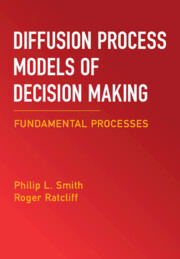Refine search
Actions for selected content:
1757 results
Chapter 4 - From Perception to Imagination
-
- Book:
- Kant and the Power of Perception
- Published online:
- 27 November 2025
- Print publication:
- 11 December 2025, pp 126-160
-
- Chapter
- Export citation
Beyond the surface: Neurocognitive deficits in body-focused repetitive behaviors
-
- Journal:
- Journal of the International Neuropsychological Society , First View
- Published online by Cambridge University Press:
- 27 November 2025, pp. 1-9
-
- Article
-
- You have access
- Open access
- HTML
- Export citation
Going Home: Ngũgĩ wa Thiong’o
-
- Journal:
- African Studies Review , First View
- Published online by Cambridge University Press:
- 26 November 2025, pp. 1-4
-
- Article
-
- You have access
- HTML
- Export citation
14 - Soviet Crimes at Times of War, 1941–1945
- from Part IV - Criminality and Occupation
-
-
- Book:
- The Cambridge Companion to the Nazi-Soviet War
- Published online:
- 13 November 2025
- Print publication:
- 20 November 2025, pp 248-262
-
- Chapter
- Export citation
20 - The Politics of War Memory in the USSR and Post-Soviet Russia
- from Part VII - Post-war Legacies and Myth-Making
-
-
- Book:
- The Cambridge Companion to the Nazi-Soviet War
- Published online:
- 13 November 2025
- Print publication:
- 20 November 2025, pp 365-381
-
- Chapter
- Export citation
19 - Germany’s Selective Memory of the Eastern Front
- from Part VII - Post-war Legacies and Myth-Making
-
-
- Book:
- The Cambridge Companion to the Nazi-Soviet War
- Published online:
- 13 November 2025
- Print publication:
- 20 November 2025, pp 349-364
-
- Chapter
- Export citation

Moral Autopsy
- Truths, Secrets, and the Judicial Afterlives of Communist Secret Service Archives
-
- Published online:
- 18 November 2025
- Print publication:
- 30 October 2025
Fashion statements: Activism, memory, and participatory culture in Trina Robbins’ Misty
- Part of
-
- Journal:
- Memory, Mind & Media / Volume 4 / 2025
- Published online by Cambridge University Press:
- 18 November 2025, e24
-
- Article
-
- You have access
- Open access
- HTML
- Export citation
Chapter 10 - Recalling Colonialism in North Africa
- from Part II - Memories
-
-
- Book:
- African Literature in Transition
- Published online:
- 31 October 2025
- Print publication:
- 13 November 2025, pp 152-167
-
- Chapter
- Export citation
Chapter 19 - Algiers as a “Realm” of Memory in Contemporary Algerian Postcolonial Literature of French Expression
- from Part III - Maps
-
-
- Book:
- African Literature in Transition
- Published online:
- 31 October 2025
- Print publication:
- 13 November 2025, pp 296-310
-
- Chapter
- Export citation
1 - Memory and imagination
-
- Book:
- The Prompts You Need to Help You Write the Book You Want to Write
- Published online:
- 25 October 2025
- Print publication:
- 06 November 2025, pp 1-14
-
- Chapter
- Export citation
1 - Judicializing and Dissecting Communism at the “End of History”
- from Part I - Contextualizations
-
- Book:
- Moral Autopsy
- Published online:
- 18 November 2025
- Print publication:
- 30 October 2025, pp 57-92
-
- Chapter
- Export citation
4 - Naming the Secret Communist Agent
- from Part II - In the Court of Law
-
- Book:
- Moral Autopsy
- Published online:
- 18 November 2025
- Print publication:
- 30 October 2025, pp 162-186
-
- Chapter
- Export citation

The Making of Revolutionary Feminism in El Salvador
-
- Published online:
- 28 October 2025
- Print publication:
- 18 September 2025

Diffusion Process Models of Decision Making
- Fundamental Processes
-
- Published online:
- 26 October 2025
- Print publication:
- 13 November 2025
Cardiometabolic risk accounts for associations between personality and cognition in midlife
-
- Journal:
- Journal of the International Neuropsychological Society , First View
- Published online by Cambridge University Press:
- 21 October 2025, pp. 1-14
-
- Article
-
- You have access
- Open access
- HTML
- Export citation
AI and generational amnesia: An ecological approach to ‘new memory’ regimes
- Part of
-
- Journal:
- Memory, Mind & Media / Volume 4 / 2025
- Published online by Cambridge University Press:
- 20 October 2025, e17
-
- Article
-
- You have access
- Open access
- HTML
- Export citation
11 - We Are More Than One, When We Speak Together: Collective Art, Plural Possibilities, and the Horizon of Utopia
-
- Book:
- Tied Up in Tehran
- Published online:
- 28 September 2025
- Print publication:
- 16 October 2025, pp 294-316
-
- Chapter
- Export citation
5 - Persecution, Victimhood, and Storytelling in Sectarian Portraits of Present-Time Violence
-
- Book:
- Violence, Power, and Society in the Dead Sea Scrolls
- Published online:
- 29 September 2025
- Print publication:
- 16 October 2025, pp 132-163
-
- Chapter
- Export citation
Synthetic afterlives: Deathbots as affective infrastructures of memory
- Part of
-
- Journal:
- Memory, Mind & Media / Volume 4 / 2025
- Published online by Cambridge University Press:
- 13 October 2025, e16
-
- Article
-
- You have access
- Open access
- HTML
- Export citation
